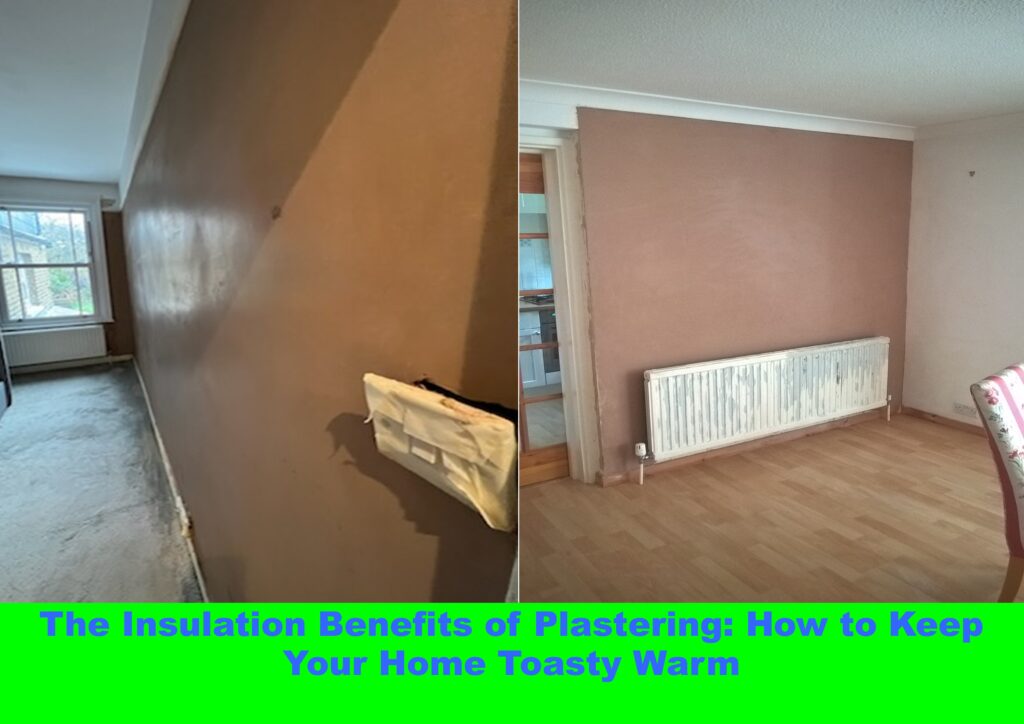The Insulation Benefits of Plastering: How to Keep Your Home Toasty Warm11th March, 2024|

When it comes to home refurbishments, plastering often takes centre stage. While plastering is often valued for its aesthetic appeal and longevity, it’s worth noting that it can also have an effect on your home’s insulation. Let’s dive into the world of plastering and explore how it can enhance both your comfort and energy efficiency.
Traditional Plaster vs. Thermal Insulation Plaster
Traditional Plaster
Traditional plaster typically comprises a blend of water, sand, and either cement, gypsum, or lime. When applied to walls, it provides a smooth as glass finish and adds a layer of insulation due to its thickness. However, this impact is minimal, and as such if you are looking for more substantial thermal benefits there are other options, namely thermal insulation plaster.
Thermal Insulation Plaster
Thermal insulation plaster is a game-changer for energy conscious homeowners. One excellent example is SprayCork, which infuses natural cork into the plaster mixture. Here’s how it works:
- Cork possesses inherent insulation properties, creating a barrier that reduces heat transfer through your walls.
- The application process for SprayCork involves applying it in two 3mm coats, followed by a 2mm skim of plaster. The end result is a smooth surface that’s ready for decoration, with built-in insulation.
Alternatives and Their Drawbacks
Option 1: Cavity Wall Insulation
- Suitable only for external walls with cavities
- If rainwater seeps through cracks or reaches unprotected walls, they become susceptible to dampness.
- Becomes ineffective once dampness sets in.
Option 2: Insulation Sheets and Boards that are on Top of Existing Plaster
- Adds bulk and reduces room space
- Requires additional plaster layers
Option 3: Remove and Replaster
- Time-consuming and costly
- Still bulky
The Benefits of Plaster with Insulation
Enhanced Thermal Performance
- Helps retain warmth indoors during the winter months.
- Blocks excessive heat in summer.
- Maintains a comfortable indoor environment.
Noise Dampening
- Thick plaster layers reduce noise transfer between rooms.
- In older homes with plaster walls, you’ll often find a quieter environment compared to those with drywall.
Fire Resistance
- Plaster offers better fire resistance compared to drywall.
- Provides an added safety layer.
Conclusion: A Smarter Choice
When considering plastering options, think beyond aesthetics. Insulation matters! Thermal insulation plaster not only enhances the appearance of your walls but also helps conserve energy and enhances overall home comfort. So, whether you’re refurbishing an old home or planning a new project, choose plastering that works harder for you—keeping you cozy and efficient year-round.
Remember, the right plastering choice can transform your space into a haven where style meets substance. Happy Plastering!
Need Expert Advice?
If you are looking for advice, feel free to contact us and well arrange your free consultation and no obligation free quote to discuss your project and offer the best solution.
Contact us today to get started with your FREE consultation!









